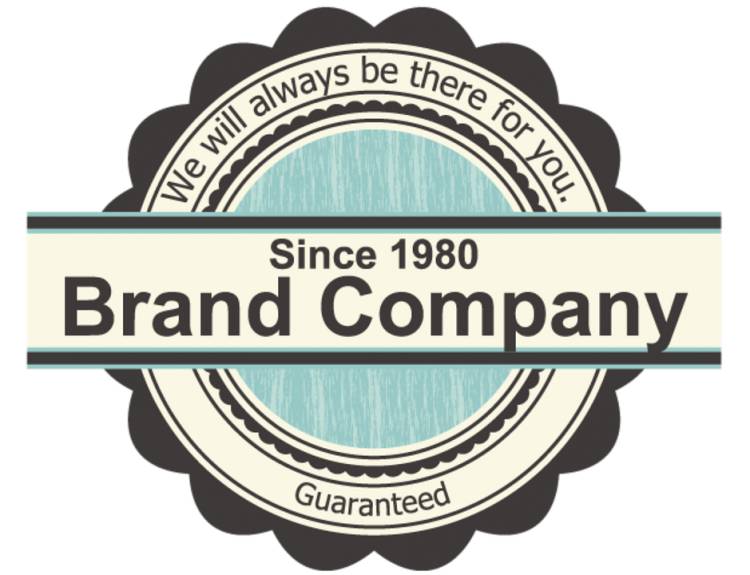Know-How Trademark Registration Can Impact Your Business
Every business deals with trademarks on a regular basis. Another way of referring to brands is 'Trademark'. The buying decisions of customers are impacted by trademarks and the image that such labels represent. For business people, it is important to understand why trademarks are important assets and help to develop their business.

Every business deals with trademarks on a regular basis. Another way of referring to brands is 'Trademark'. The buying decisions of customers are impacted by trademarks and the image that such labels represent. For business people, it is important to understand why trademarks are important assets and help to develop their business.
What is a Trademark?
A trademark is something that lets customers differentiate the company from other firms. Trademark could be a logo, a term, a title, etc.
Know more about Trademark, see the video below-
How Trademark affects your business
-
An asset of the company
If the brand has built a niche in the company, its value increases. With market credibility, the brand's value will increase. Therefore, online registration of a trademark helps you to monetize that value in the future and protect it from possible breaches.
Trademark registration is, however, only possible when the brand name is original. A trademark check before applying for TM is also a must.
-
Communication tool for the business
Trademarks are an efficient method of communication. Within a single name or logo, trademarks can express intellectual and emotional characteristics and messages about you, your organization, and your company's reputation, products, and services.
A term doesn't need to be your signature. Regardless of language or alphabet, designs may be recognized.
-
Easy for customers to track
The marketplace is crowded and it's difficult to distinguish your company from your rivals. Trademarks/brands are an effective tool for commercial communication to capture customer attention and distinguish your company, products, and services.
Customers who view a trademark immediately understand who they are dealing with, your company's reputation and are less likely to look for alternatives. The critical factor in driving the purchase decision of a customer could be your brand.
-
Better market brand
Consumer markets have gone global, and the desire to be distinctive and different has also increased. A brand's identification through the trade name or its distinctive trademarked design, such as the bottle of coca-cola, has an influence on the psyche of the customer. It helps to make a mark and to raise the exposure of brands.
-
Increase in employees
In people's minds, brands can inspire positive feelings. As a consequence, prospects for jobs are more attractive to applicants. When employees have good feelings about the brand and the goods and services provided, employee satisfaction will be higher.
-
Business expansion
Once you have completed the registration and your trademark is secure. With expansion from one industry to another, you have the flexibility to go forward. If you intend to sell your business to another firm in the future, having a registered trademark adds to the value of the brand. This makes it possible for you to reap the fruits of the hard work you put into creating the brand.
-
Your brand becomes exclusive
Registration makes it one of a kind for your brand. It is not possible to register or use identical trademarks. If someone does, you are entitled to sue and claim damages. Therefore it brings clarification and eliminates any market misunderstanding.
The goods and services are known by the customer by a trade name. This helps to build a name in the market and the logo becomes the company's face.
-
Legal protection
Registration gives the owner the right to exclusively sell, license, and make money out of the name. The most valuable right of a registered trademark owner is the right to sue the violators. One can be sure of the arguments for infringement. If a trademark is licensed, sufficient legal proof can be needed in order to publicly defend the trademark.
To know more, about How Trademarks impact your Business, see the video below -
Trademark of Coca-cola and how it affected the business
Coca-Cola is one of the most popular logos in the world today, and the curvy flowing script was designed by Frank Mason Robinson, the bookkeeper of Dr. John Pemberton, who noticed that the two curly 'C's would look great in ads, he came up with the name previously and later flowing logotype in the Spenserian script.
It was officially registered in the year 1887. As long as you use it in US trade, the trademark will not expire. In the United States today, some of the most recognizable brands have been around for over a hundred years. It was first registered with Mercedes in 1900 as well. By 1896, Pepsi-Cola was registered.
Registration of Trademark
There are various steps that require to register the Trademark of a company i.e.
Step1. Search of trademark
Most entrepreneurs do not understand the significance of a TM quest. It's not a reasonable enough excuse to skip a TM hunt to have a particular brand name in mind. TM search lets you know if similar trademarks are available and give you a fair picture of where your trademark is located; often it also gives you a forewarning of the possibility of litigating trademarks. In time-consuming trademark litigation, why spend your money later when you can opt to stop it in the first place?
Step2. Filling application for trademark
You can opt for the same registration after you are sure that your preferred brand name or logo is not specified in the Trademark Registry India. The first move is to file with the Trademark Registry India a trademark application. Filing is mainly performed online nowadays. If the application has been filed, an official receipt for future reference is promptly given.
Step3. Examination of Trademark
After a trademark application is lodged, any anomalies are reviewed by the examiner. It could take about 12-18 months for the test. The examiner may entirely, conditionally, or critically approve the trademark.
Step4. Publication of Trademark
The publication phase is integrated into the registration process of a trademark in such a way that someone who objects to the registration of a trademark has the opportunity to object to it. If no objection remains after 3-4 months of publication, the trademark shall proceed to registration. If there is an objection, a fair hearing is held and a decision is made by the Registrar.
Step5. Certificate
When an application for registration of a trademark has been made, a registration certificate under the seal of the Trademark Office is issued after publication in the Trademark Journal.
Know more about the process of registration of trademarks, see the video below -
Conclusion
Any business wishing to succeed and expand should invest in IPR. If the organization is well organized and run, it allows the business to succeed in so many ways. Trademarks are the most powerful since the customers are directly related to them once. The influence of a trademark will enable businesses to build goodwill and a reputation on a personal basis with consumers.
BY-
Saumya Krishnani












